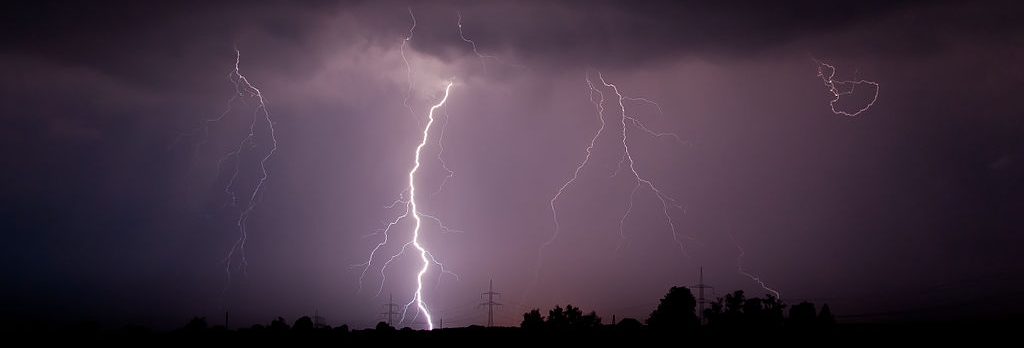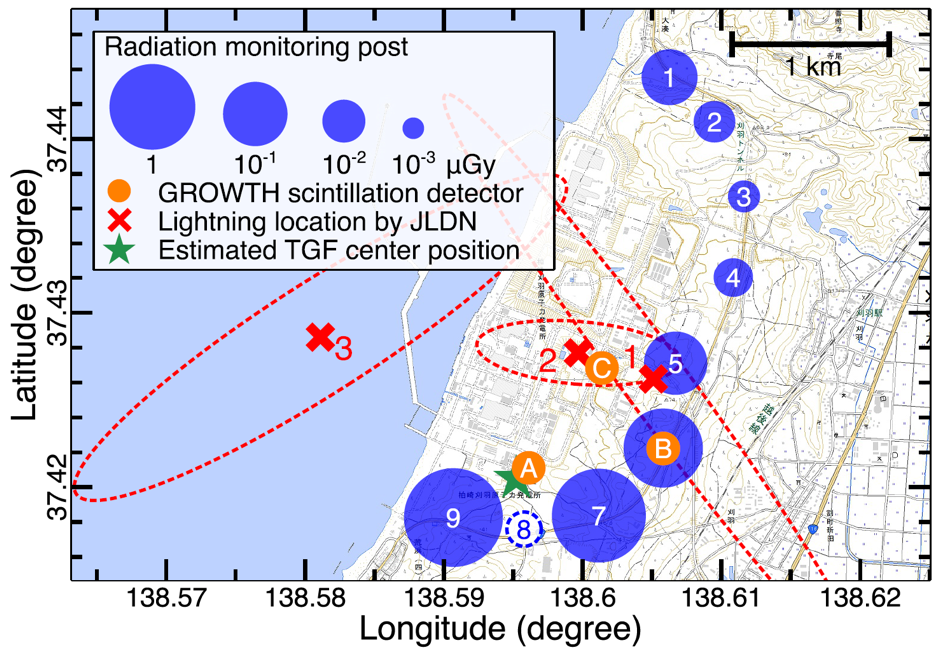[Research] Downward Terrestrial Gamma-Ray Flash Observed in a Winter Thunderstorm

A research group including Associate Professor Kazuhiro Nakazawa, of the Kobayashi-Maskawa Institute for the Origin of Particles and the Universe (KMI), Nagoya University, detected a downward burst of gamma rays during lightning discharge with scintillation detectors at the Kashiwazaki-Kariwa Nuclear Power Station at sea level in Japan. This research was published in Physical Review Letters on August 7, 2019.
Although lightning is a familiar natural phenomenon, thunderclouds still hold many mysteries. Terrestrial gamma ray flashes (TGFs), which are high-energy millisecond bursts of gamma rays produced in thunderstorms, have been known since the 1990s. The photon-energy of TGFs is more than one million times higher than the optical lightning flash, indicating that there is some kind of unresolved acceleration mechanism for electrons in thunderclouds. Some TGFs shoot upward into space and have been observed by satellites or spacecraft from a height of 500 km. Thunderclouds also emit downward TGFs toward the ground; these have only recently been confirmed by observation. However, quantifying downward TGFs with ground-based detectors is difficult because such strong gamma ray flashes saturate ground-based instruments, which are less than several kilometers away from the thunderclouds.
The research group noticed that TGFs were observable in Japan during the winter and have been attempting to measure them since 2006. They finally succeeded in quantifying a downward TGF by combining their detector data, which has a high time resolution and sensitivity to gamma rays, and data from a Tokyo Electric Power Company detector, which has a large tolerance to a wide range of gamma ray intensities. They showed that ground-based observation is a good approach for capturing data about TGFs because it is much easier to place multiple detectors on the ground than in space.
The TGF was observed on November 24, 2017 at the Kashiwazaki-Kariwa Nuclear Power Station. The radiation dosage reached 1.4 μGy, which is high for a natural phenomenon, but less than one-tenth the amount of radiation from a chest X-ray. Furthermore, downward TGFs typically occur less than once a year in any given location. The results show that downward TGFs are not harmful to people on the ground; humans have always lived with this phenomenon.
Although our understanding of radiation has improved since the discovery of X-rays by Wilhelm Conrad Roentgen, this is the first time that researchers on the ground have quantitatively measured a TGF from a thundercloud. The study of thundercloud gamma rays is a relatively new field and there are still many questions to answer. For example, where and how in thunderclouds are electrons accelerated? How strong is the dosage when TGFs hit airplanes in the sky? How frequent are nuclear reactions in clouds and how many reactions are there?
To answer these questions, more observations are needed on the ground and in orbit. Next spring, the TGF observation satellite, TARANIS, will be launched by the French Space Agency (CNES), in collaboration with Nagoya University.

Links
Paper Information
Physical Review Letters (August 7, Vol 123, (2019), 061103), “Downward Terrestrial Gamma-Ray Flash Observed in a Winter Thunderstorm”



